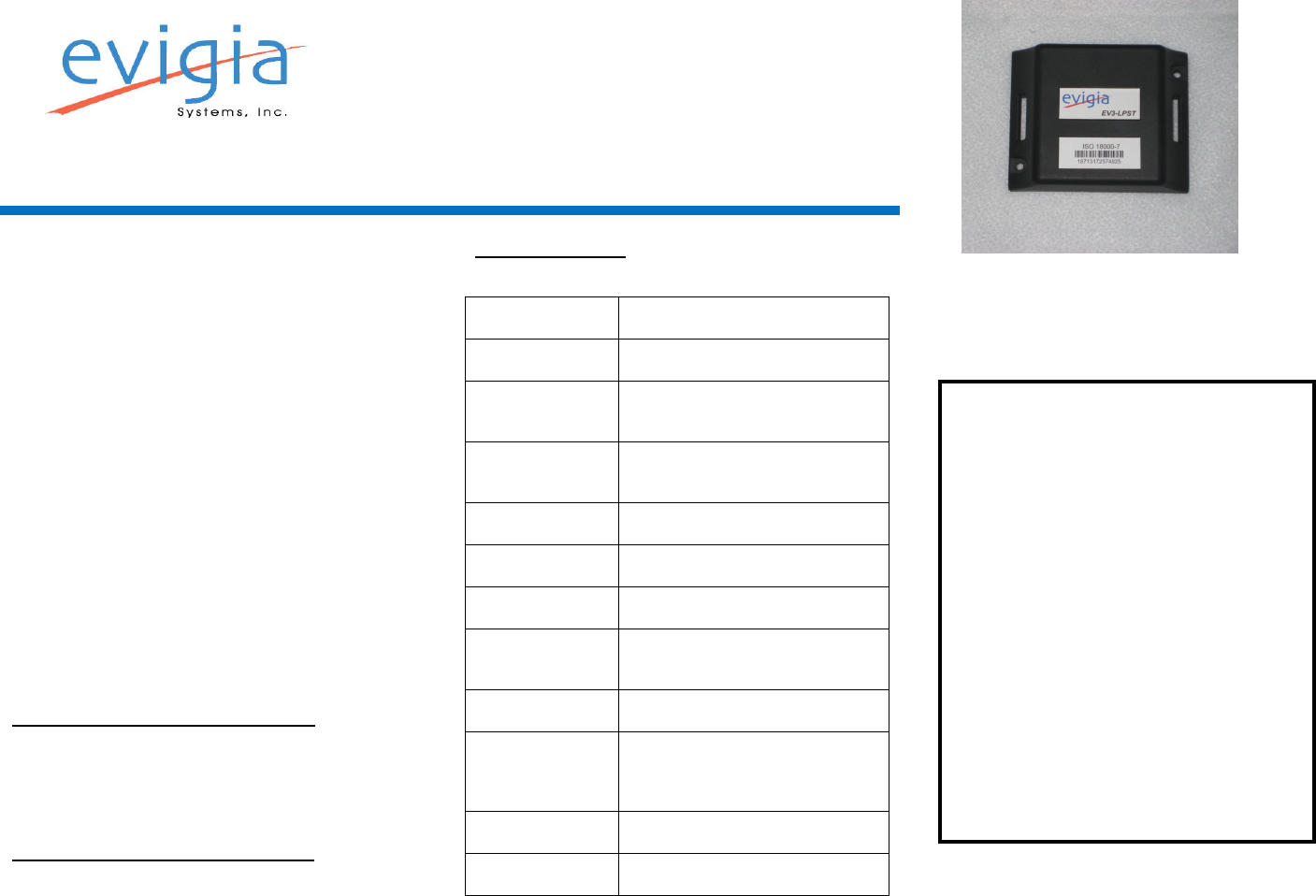Evigia Systems SLX-1 RFID Tag User Manual manual
Evigia Systems, Inc. RFID Tag manual
manual

Low Profile Sensor
Low Profile SensorLow Profile Sensor
Low Profile Sensor
Transponder
TransponderTransponder
Transponder
EV3
EV3EV3
EV3-
--
-LPST
LPSTLPST
LPST
This product shares many of the high
performance characteristics found in its sister
product, EV3-ST. But, in addition to being fully
ISO18000-7 interoperable with the rest of the EV3
family of products, this EV3-LPST boasts as ultra
low profile, low power consumption, large
memory storage, and an internally encased
battery.
This device operates in a master/slave
configuration with an interrogator. In all cases,
the interrogator acts as the master unit initiating
commands from the transponder. Once, the
device has been successfully woken up, it will
respond to data transmission from the
interrogator by sending packets of data.
OPERATION OF THE TRANSPONDER
This Device has a non-replaceable battery and is
ready for operation.
MOUNTING OF THE TRANSPONDER
This device can be mounted using to a desired
location using appropriate methods, such as
magnet, Velcro strips, screws or other means;
SPECIFICATIONS
RFID Protocol ISO 18000-7:2008
Frequency 433.92MHz
Power Internal battery, primary
lithium
Battery Life >6 years at 2 collections
per day
Range feet unobstructed
Dimensions
Weight
Operating
Temperature -30⁰C to +70⁰C
Dust / Moist IP 64
Beeper Audible beeper for tag
location and status
indication
Memory 256 Kbytes
Compliance FCC, HERO
This device complies with part 15 of the FCC Rules
and with RSS-210 of Industry Canada. Operation is
subject to the following two conditions: (1) this
device must not cause harmful interference, and (2)
this device must accept any interference received,
including interference that may cause undesired
operation.
NOTE: This equipment has been tested and found to
comply with the limits for a Class A digital device,
pursuant to Part 15 of the FCC Rules. These limits are
designed to provide reasonable protection against
harmful interference when the equipment is operated
in a commercial environment. This equipment
generates, uses, and can radiate radio frequency
energy and, if not installed and used in accordance
with the instruction manual, may cause harmful
interference to radio communications. Operation of
this equipment in a residential area is likely to cause
harmful interference in which case the user will be
required to correct the interference at his own
expense.
WARNING: Changes or modifications not expressively
approved by the party responsible for compliance
could void the user's authority to operate the
equipment.